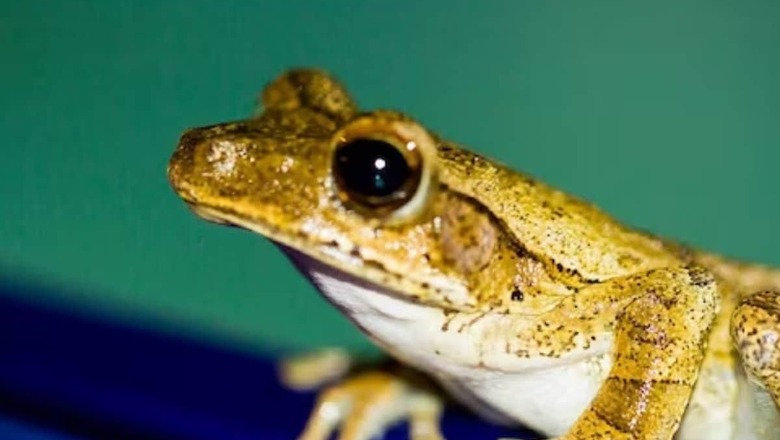
views
In the Western Ghats of India, researchers associated with the World Wildlife Fund initiated an expedition to investigate amphibians and reptiles in the region’s rainy foothills. Initially aimed at exploring biodiversity, the mission changed as they uncovered a discovery blurring the lines between plants and animals. This intriguing find sparked a scientific interest.
Lohit Vaity, an expert from the World Wildlife Fund in India and his team were in the Western Ghats forests, finding different kinds of frogs and other animals. According to The New York Times, they saw some golden-backed frogs near the road and one frog sitting on a tree branch caught Lohit’s eye.
Researcher Lohit discovered a small mushroom growing on the frog’s back, which was unusual because mushrooms usually don’t grow on animals. This finding by Lohit became popular and has been published in the Reptiles and Amphibians Journal.
According to mycologists, the fungus causing the mushroom growth might have found enough nutrients on the frog’s skin to grow a mushroom. This suggests that the fungus has evolved to survive in unusual places, blurring the boundaries between different environments and showing how adaptable life can be.
The report majorly discusses a frog called Rao’s intermediate golden-backed frog. It’s a yellowish amphibian named after the zoologist who found it in 1937. In June 2023, researchers found this frog, along with many others, in a small pond by the roadside filled with rainwater. They spotted one frog sitting on a twig with a strange growth on its left side. When they looked closer, they found a mushroom growing from its flank. Surprisingly, the frog was alive and moving about.
About Fungi and Mushrooms
Few fungi can grow into mushrooms. Usually, fungal spores grow on a surface and make thread-like cells called mycelia. If they have enough food, these mycelia turn into mushrooms. But it’s strange how a mushroom grew on the frog’s skin. The researchers chose not to remove it for further examination.
Fungi can grow in different environments, including living organisms. For example, humans naturally have yeast-like fungi on their skin. But certain fungi, like Batrachochytrium dendrobatidis or chytrid, can be harmful and cause fatal diseases in frogs. Experts believe that the fungus discovered on the frog’s back doesn’t seem to be disease-causing. Although detailed information is not yet available.




















Comments
0 comment